May 24, 2025 | 16:26 GMT +7
May 24, 2025 | 16:26 GMT +7
Hotline: 0913.378.918
May 24, 2025 | 16:26 GMT +7
Hotline: 0913.378.918
Binh Gia District People's Committee recently reported a widespread infestation of yellow-spined locusts within the district. Accordingly, the three hamlets of Tham Khon, Ba Bien, and Yen Hung in Thien Hoa commune reported extensive damage to the leaves of local bamboo forests, with a density of 600 to 1000 locusts per bush, and a total affected area of approximately 10 hectares.
The locust swarms are currently descending from the high hills to streams and bushes, with sporadic infestations reported in corn crops at a density of 50 to 60 locusts per square meter. The spotted locusts range from their third and fourth age stages. The population of yellow-spined bamboo locust is expected to increase in the near future, causing further damage to local bamboo forests, as well as other corn and rice fields.
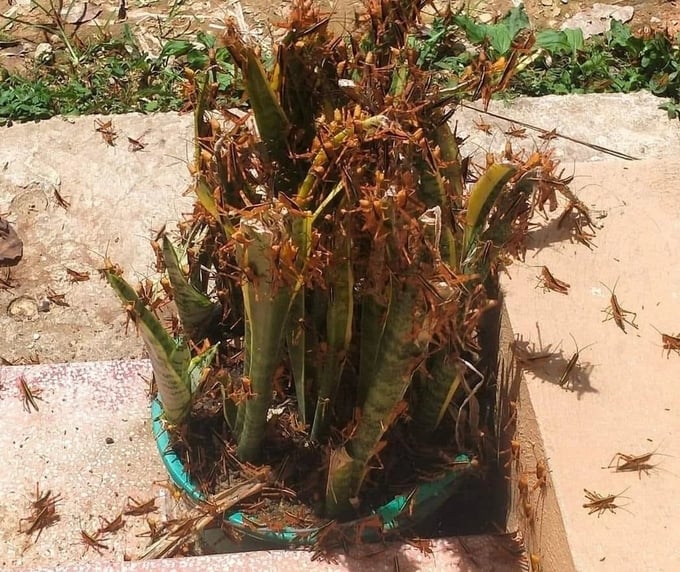
Locust infestation in Binh Gia district, Lang Son province.
The life cycle of the yellow-spined bamboo locust can span approximately five to six months per year. Adult locusts can rapidly cover between 40 and 60 kilometers in swarms, causing extensive and unmanageable destruction. When they exhaust food sources in forests, they can migrate to damage other crops near the forest edge such as corn, rice, and livestock grazing areas; or relocate to other forests.
Binh Gia district forecasts that during the final stages of the 2024 harvesting season, there is an increased risk of locust infestation and widespread damage.
With the aim of addressing infestation risks and minimizing the damage caused by yellow-spined bamboo locusts, Binh Gia District People's Committee has instructed local villages and hamlets unaffected by locusts to enhance surveillance, monitoring, and forecasting of locust sightings and developments. This proactive approach aims to implement timely prevention and control measures, thereby preventing widespread damage.
On the other hand, villages and hamlets affected by yellow-spined bamboo locust infestation have been requested to disseminate information and provide guidance to the local community regarding the examination of local bamboo forests; and the effective detection and control of infestation clusters.
Furthermore, the district will focus on investigating and determining the locusts' flight direction, movement patterns, scope of activity, as well as the types of crops severely affected by locusts.
Binh Gia district has also provided guidelines for controlling yellow-spined bamboo locusts. These measures include illuminating forested hillsides and forest-adjacent rice, corn crop areas that are affected by locusts. For newly hatched locust clusters with low density, early detection and manual capture using nets for destruction are recommended.
When locust density is high or the risk of spreading to rice and corn fields is present, farmers are advised to isolate the affected areas and apply pesticides such as Ga Noi 95SP, Patox 95SP, Wavotox 585 EC, or Wamtox for immediate control.
Additionally, local communities and specialized agencies are requested to organize into teams or task forces for concentrated spraying services. These groups will use battery sprayers or motorized sprayers to encircle infestation clusters, and conduct thorough spraying in affected areas to eradicate locusts, preventing widespread and unmanageable damage.
In an interview with the Vietnam Agriculture Newspaper on the afternoon of May 29, the head of Thien Hoa commune, Binh Gia district, stated that locusts were first sighted in the forests before migrating to residential areas and infesting local crops. The preliminary damage is estimated to be approximately 1 to 2 hectares of corn.
Regarding images circulating on social media depicting recent locust sightings at a local elementary school, the head of Thien Hoa commune confirmed that the students are unaffected. Accordingly, the insects only hop, crawl, and cling to walls and ornamental plants.
The yellow-spined bamboo locust, scientifically known as Ceracris kiangsu Tsai (Acrididae; Orthoptera), is characterized by its green body with a slightly yellow abdomen and a distinct yellow stripe on its back. Adult locusts measure between 3.1 and 4.2 centimeters in length, with males being smaller than females.
The eggs of the yellow-spined bamboo locust are 0.6 to 0.8 centimeters in length, slightly curved, and earth brown in color. Eggs are typically laid in bamboo forests on eastern mountain slopes, where there is ample sunlight and moderately compact soil.
The egg clusters of the yellow-spined bamboo locust are encased in a protective capsule, located approximately 3-4 cm beneath the soil surface, containing pale yellow, banana-shaped eggs. Each capsule holds 22-24 eggs, and a single female locust typically lays 6 capsules, sometimes up to 25.
Translated by Nguyen Hai Long
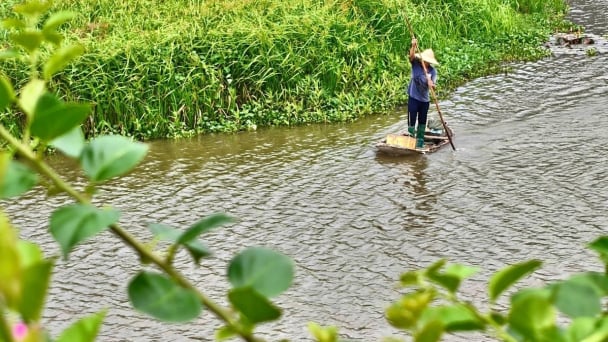
(VAN) In the tranquil wetlands of Van Long, there are quiet souls who guard the forests, nurture the waters, and oversee every bird and troop of langurs as protecting the essence of a living heritage.
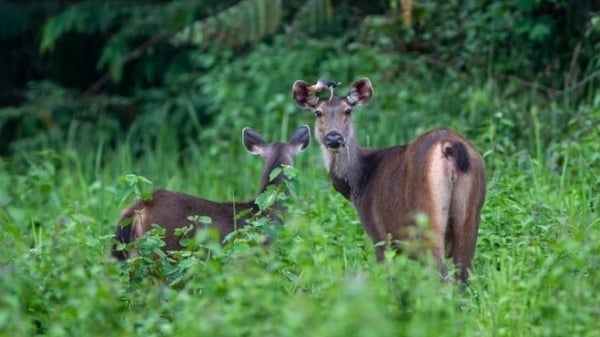
(VAN) WWF, GIZ, IUCN, UNDP call for biodiversity conservation and sustainable development must be regarded as a unity in strategies for a green future.
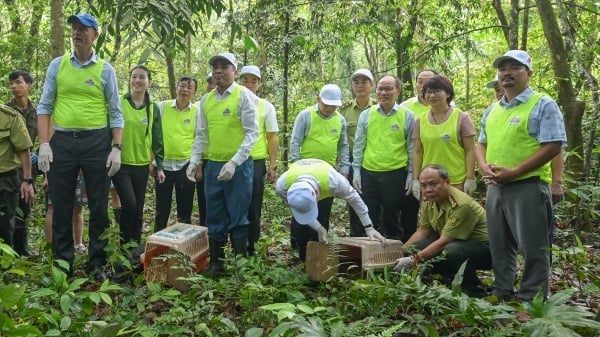
(VAN) On celebration of International Day for Biological Diversity, Deputy Minister Nguyen Quoc Tri called for practical actions to address nature and biodiversity conservation.
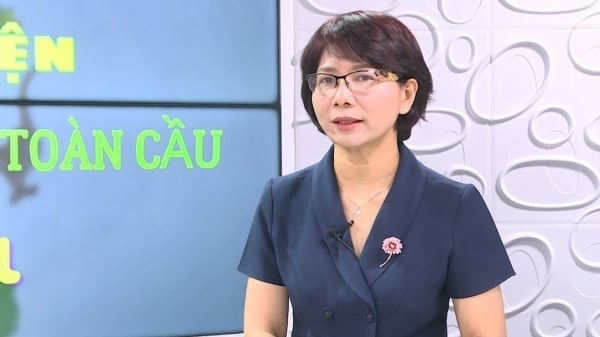
(VAN) Dr. Hoang Thi Thanh Nhan – Deputy Director of the Nature and Biodiversity Conservation Agency – highlighted this on the International Day for Biological Diversity, May 22, 2025.
![Ho Chi Minh city adapts to climate change: [2] Accelerating action](https://t.ex-cdn.com/nongnghiepmoitruong.vn/608w/files/chiqk/2025/05/22/4024-4220-bien-doi-khi-hau-1-100626_766.jpg)
(VAN) Clearly recognizing the challenges posed by climate change, Ho Chi Minh city has swiftly shaped its policies and implemented practical solutions to adapt.
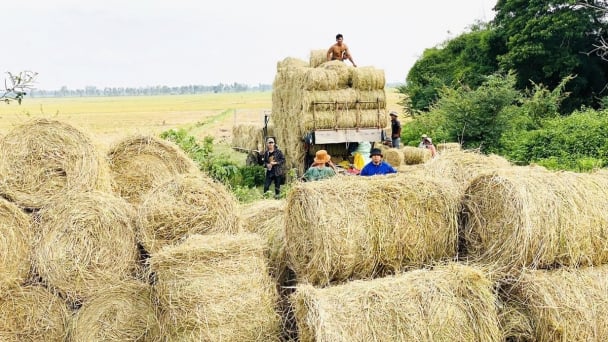
(VAN) Rice straw is no longer just a discarded byproduct, but it is becoming a green resource that helps farmers in the Mekong Delta reduce emissions and promote circular, sustainable agriculture.

(VAN) Other Effective Area-based Conservation Measures (OECMs) are solutions that contribute effectively to achieving the goals of the Kunming–Montreal Global Biodiversity Framework.